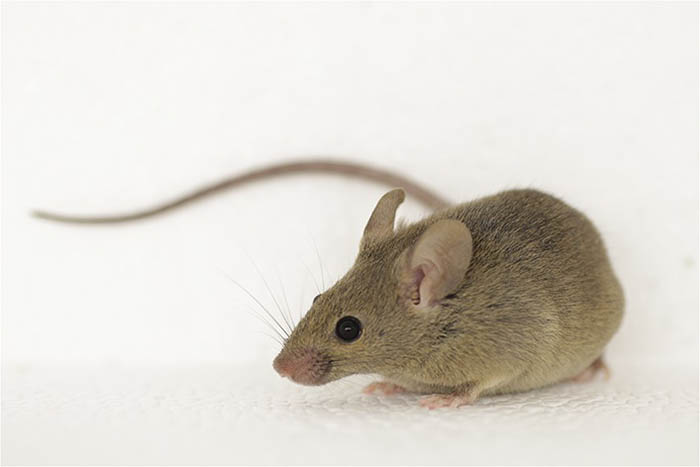FACTS, IDENTIFICATION & CONTROL
Latin name: Mus musculus
APPEARANCE
House mice are covered in short hair which are light brown or range from grey to black in color with lighter bellies. Their ears and tails have less hair than their bodies. An adult mouse weighs about 12 to 30 grams in weight and can grow up to 20 cm from the nose to the tip of tails. Their droppings are rod – shaped and pointed on the both ends.

ACTIVITIES, DIET AND HABIT
Commonly, house mice make their homes in farm field, grassy and wooded areas, building nest in areas that are dark and protected from many different elements and near available food sources.
With the inquisitive instinct in nature, house mice spend their time roaming their territory, exploring new things and unusual things. If possible, seeds and other nuts are their favorite food but they can eat most of available food.
When the temperature outside drops, house mice don’t hibernate so they start find warmer place to hide. They are usually attracted by food smell and the warmth in structures, house mice can use any openings such as utility lines, pipe openings and gaps beneath doors to gain entry into a home.
REPRODUCTION
House mice are famous for amazing reproduction. With only a female can breed 8 litter per month with 6 pups for each litter. After 21 – day pregnancy, these house mouse pups are born naked, blind and totally depend on their mother. At about 21 days, the young are weaned from their mother and may begin their short trips to explore surrounding areas. House mice reach sexual maturity at 35 days and start mating at six weeks old.
SIGNS OF HOUSE MICE INFESTATION
SIGHTINGS
Although house mice commonly active in the evening, we can see them moving in our house in the daytime. Most of common mice usually run along the wall or run from their hiding places.
DROPPINGS
Where there are mice, there are droppings. These small pellets are found in everywhere that they go through and move. Droppings measure 3 – 6 mm in length, rod – shaped and pointed at the both ends.
It is very easy to confuse between mouse and American cockroach droppings. Although the size and shape are similar but mouse dropping usually have hair inside. Cockroach droppings are not pointed at the ends and usually have ridges running down the sides.
FOOTPRINTS
As mice explore their territories, they often leave behind footprints or tracks on surfaces. The special pattern of a four – toed front foot and five – toed back footprint are the clearest sign of mouse infestations.
GNAWING/ CHEWING
House mice are famous for gnawing many items. In most cases, shaving and a fresh accumulation of debris is often the first indication of damage. Teeth and gnaw marks can be found along the edge of routine that mice usually go through, on the top of objects or create openings into areas.
BURROWS/TUNNELS
House mice usually build their nest by materials that provide dark and protected environments such as insulation and other soft materials. Their nests often have holes or dusty burrows and cobwebs and droppings.
SOUND
In the night, especially in quite night, we can hear these small animal gnawing and scratching the wall, running on the rooftop and squeaking.
ODOR
Mouse urine play an important role in communicating to each other. Commonly, rodents will mark an area to attract females or warn off other males. This distinct odor can be noticeable in an area with a large population rodents or when they active for a long time.
TIPS FOR CONTROLLING MICE AT HOME
In order to prevent mice from invading our house, all crevices, cracks, holes and gaps larger than a pen cap should be sealed with cements or mixing compound. We shouldn’t use wood to seal the holes because mice are capable to gnaw through this surface.
Hygiene may have an effect on pest infestations. Dishes and bowls have to clean after using. Food should be stored in glass or mental containers with tight lids.
When your house is attacked, prevented methods are less effective.
MORE INFORMATION
House mice are small mammals which are named by their living tendency. Beside human, house mice are popular mammals in the world. Native to Asia, these rodents have spread throughout the world. They commonly live in or near human environment. They can be used as laboratory subjects and distribute a large variety for scientific researches.
House mice run, walk and stand by four legs. They can stand on the hind legs with the support of tail which create the balance when they move. The house mice have sharp senses of hearing and communicate with others by squeak. Some squeaks can be heard but another squeak extend into the ultrasonic range. House mice weigh approximately 12 – 22 grams and may grow up to 20 cm. They are black to light color or grey in color and light bellies.

